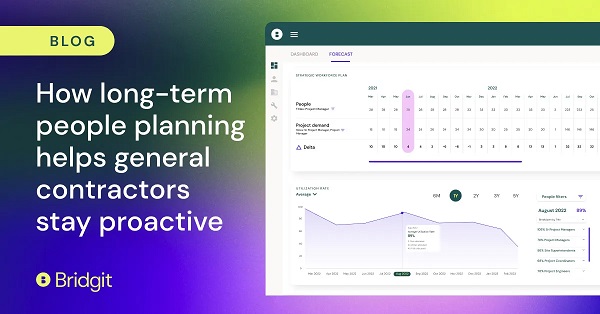 Sunday, May 5, 2024
Sunday, May 5, 2024  Sunday, May 5, 2024
Sunday, May 5, 2024 
Construction is a long game. Mid-size projects can take anywhere from 6-9 months to complete and larger projects can easily take over a year. Given how far into the future a project can stretch, we’re often surprised to learn that long-term people planning is a common challenge since most of the workforce planning that’s being done is only looking out a couple of months.
To start firing on all cylinders, general contractors need an integrated approach to people planning–an approach that offers one unified, long-term view of what success looks like. But building an integrated, long-term approach to people planning is a lot easier said than done if you aren’t using the right tool for the job. Workforce planning can take upwards of 14 hours every week if it’s being done manually, which is typically managed by a single gatekeeper of workforce information, including upcoming availability.
Think about how many departments rely on knowing your team’s availability to do their work and how planning further out could help them. Nearly all of them, right?
Spreadsheets have served their purpose for decades, but times have changed and they don’t cut it in today’s digital-first world. There’s simply too much time being spent maintaining workforce data in spreadsheets to only produce a 2 month look-ahead with no ability to forecast upcoming needs.
On top of the time being spent, spreadsheet solutions aren’t built to scale as a company grows. More people join the team, more projects are undertaken, and the workforce planning process becomes messier, more complicated, and creates more unproductive work for operations teams.
Keep reading this blog on gobridgit.com